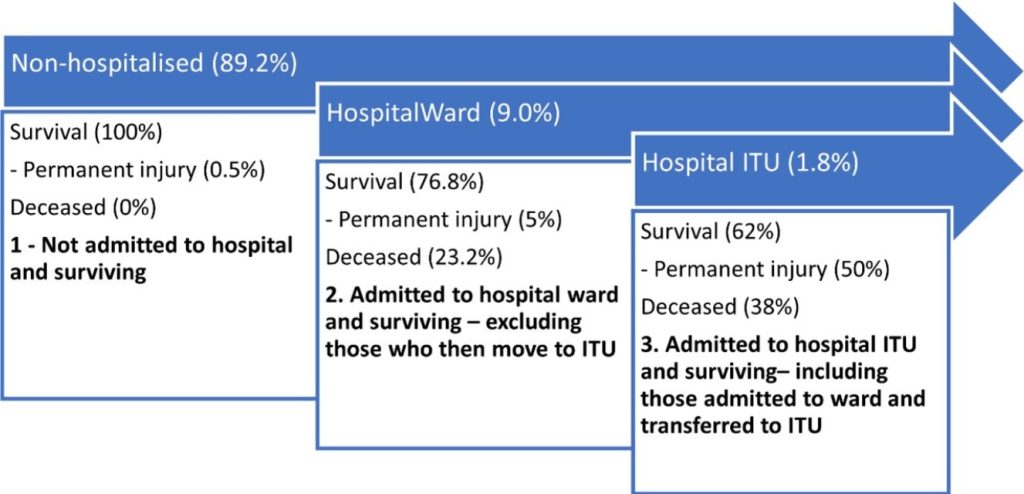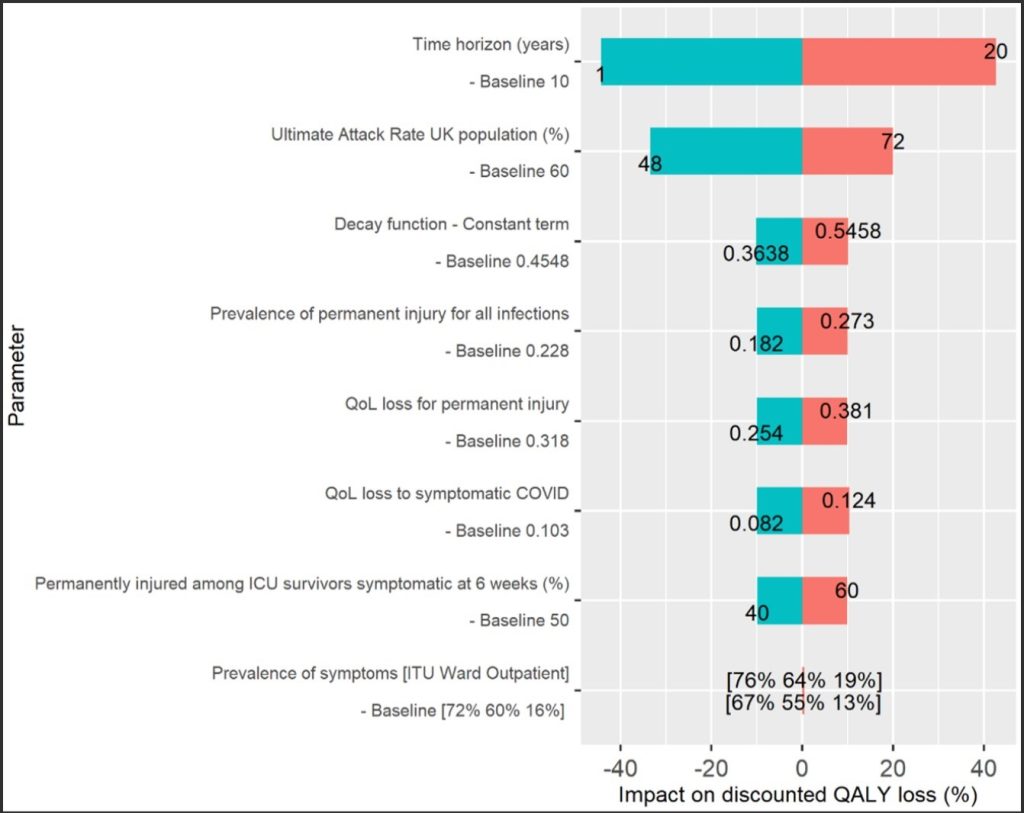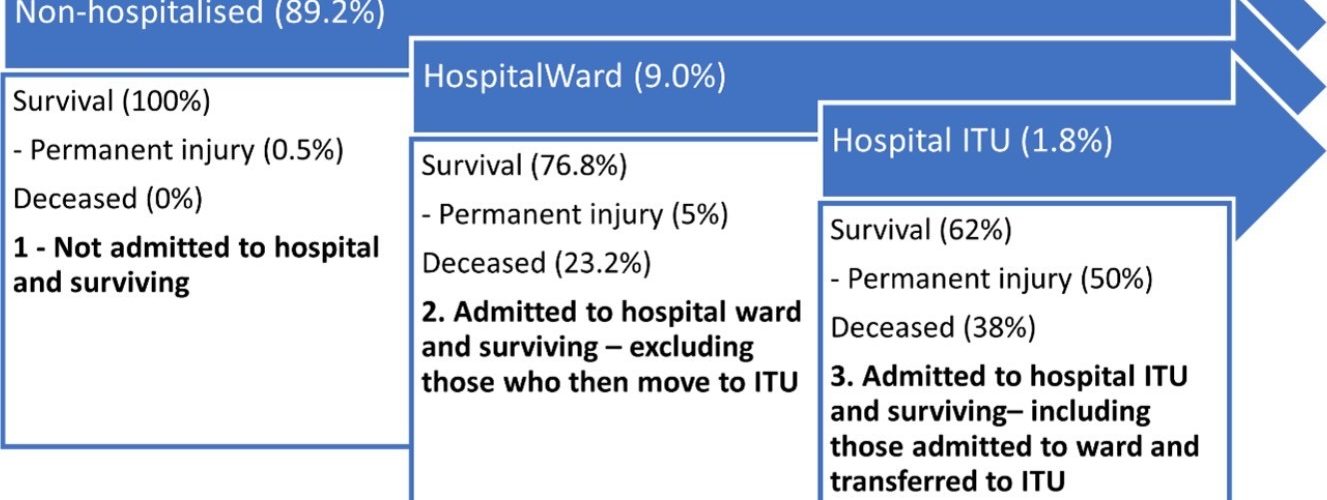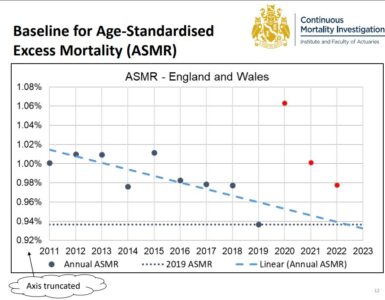A new paper describes a model framework which can be used to understand the number of Quality Adjusted Life Years (QALYs) lost to symptoms arising from COVID-19 disease in the UK population. This includes symptoms of “Long-COVID”.
The paper arose from collaboration between a multi-disciplinary team of expert volunteers. This was on behalf of the Institute and Faculty of Actuaries – part of its objective to serve the public interest. The authors (who include the author of this blog) have backgrounds in medicine, public health, epidemiology and actuarial science.
Purpose
We recognised quickly that understanding of the disease would advance significantly while we were developing the model. Similarly, between the modelling and publication of the paper. So our objective was to develop the framework. Indeed we had to update the parameters used in the model several times during the course of the project, as better information on Long-COVID became available.
The model quantifies morbidity impacts from acute COVID-19 illness. It also captures the impact on those who suffer from ongoing Long-COVID symptoms for several weeks. Lastly, it includes those who are permanently injured as a result of their illness or treatment. The latter group includes some of those who survive intensive care.

Published Results
It is the framework that is the main output of our modelling, not the results we obtained using a particular set of assumptions. Nonetheless, our modelling gives an indication of how significant the burden of disease may be.
Assuming that 3 out of 5 people in the UK become infected, we modelled 300,000 QALYs lost within one year of infection. Similarly, 558,000 QALYs were modelled as lost within ten years. Usual UK Government estimates of willingness-to-pay to avoid these QALY losses would be up to £17.9 billion and £32.2 billion, respectively.
The model is sensitive to the time horizon under consideration. This is because a significant proportion of the lost QALYs occur years after infections occur.
The model is also particularly sensitive to the assumed “attack rate”. This is the proportion of the UK population who are ultimately infected at some point.
It is worth noting that the modelling result above assumes no reinfections. New variants which can reinfect those previously infected obviously mean a risk of further loss of QALYs.

Model Usage
An example of the use of the model in practice can be seen in papers prepared by the Department of Health and Social Care (DHSC) and Office for National Statistics (ONS) for the Scientific Advisory Group for Emergencies (SAGE). Specifically, SAGE 95 on 9 September 2021 included both short-form and long-form papers considering the “Direct and Indirect health impacts of COVID-19 in England”.
Morbidity QALY losses for these populations were calculated based on the Institute and Faculty of Actuaries’ (IFoA) modelling that was used in the previous paper in this series using data from ONS and PHE. The model quantifies morbidity impacts from acute COVID-19 (symptoms lasting up to 4 weeks) as well as quantifying the impact on individuals suffering from Ongoing COVID (symptoms lasting between 4-12 weeks) and Long COVID (symptoms lasting for 12 weeks or more).
DHSC and ONS: Direct and Indirect health impacts of COVID-19 in England
I am indebted to my co-authors Dr Chris Martin, Michiel Luteijn, Willam Letton and Josephine Robertson. We had fantastic support on this paper from other IFoA volunteers. These included Steve Bale, Scott Reid, Matt Gurden and Colin Dutkiewicz, and researchers from Crytallise Ltd.
This was part of a wider programme of public interest volunteer work within the actuarial profession, led by myself and Colin Dutkiewicz. I described one of our earlier models in this blog from last year. We considered the impact on mortality rates of breaching hospital capacity over the winter.
You can access the published paper here: https://doi.org/10.1371/journal.pone.0260843
Citation: Martin C, Luteijn M, Letton W, Robertson J, McDonald S (2021). A model framework for projecting the prevalence and impact of Long-COVID in the UK. PLoS ONE 16(12): e0260843. https://doi.org/10.1371/journal.pone.0260843















